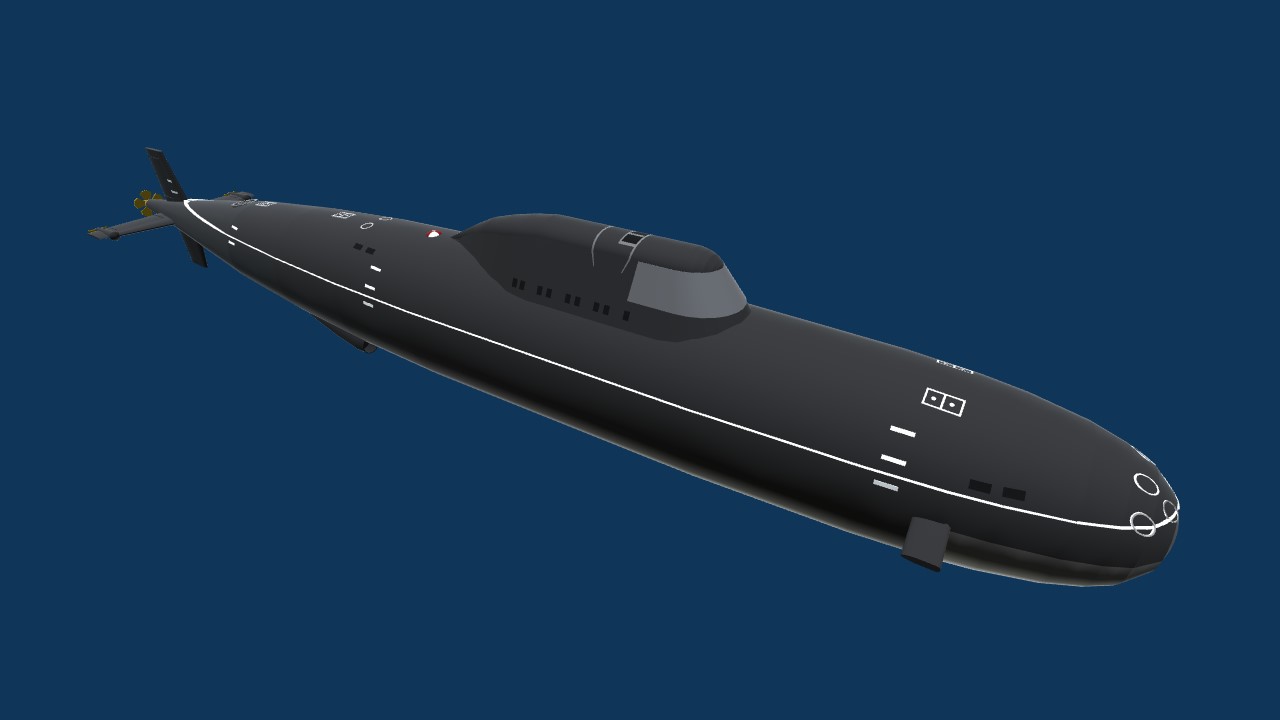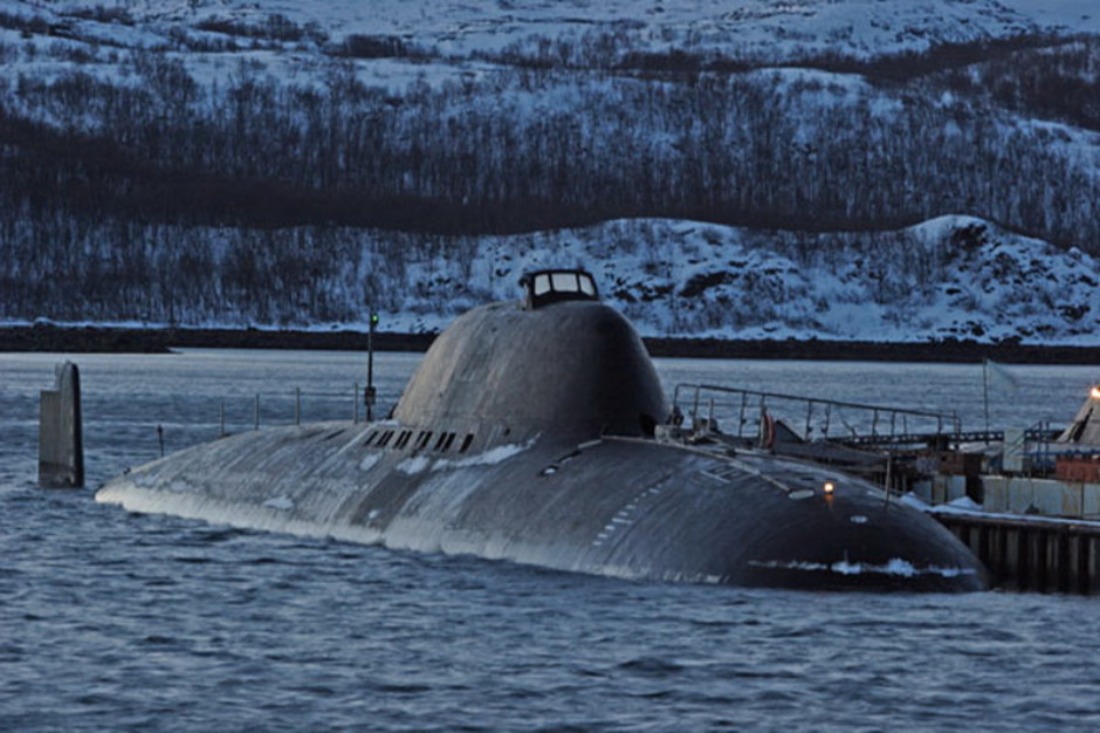Alfa Class Submarine - Class NATO Submarine - Originally a submarine racing car and looked the part with a small teardrop hull, a contoured-trimmed sail designed to reduce aquadynamic drag and even a convertible style windscreen.
Soviet nuclear-powered attack submarines were faster and dived deeper than their Western counterparts—though they were noisier and more prone to accidents.
Alfa Class Submarine

Project 705, on the other hand, was developed from 1958 as a conceptual design to maximize the speed advantage, allowing the submarine to not only sustain, but outmaneuver NATO air units that normally cruise in the 33 NATO does - and still stays one step ahead. against the enemy. Destroying torpedoes and enemy submarines.
Maquette 1/400 Model Alfa Class Submarine K 123
It had a relatively small titanium alloy shell. Titanium is a rare metal that can create surfaces as strong as steel for about half the weight. It is also paramagnetic, making it very difficult to detect by magnetic anomaly detectors on naval patrol aircraft.
Titanium can only be welded in an inert atmosphere of argon or helium. Because of this, American engineers believed that it was simply impractical to cast large pieces of titanium on the scale required for a submarine hull. They underestimated Soviet intent: Workers in pressure suits worked in huge warehouses filled with argon to collect slabs of the shiny, rare metal.
The resulting Project 705 submarine was 81 meters long, but weighed only 3,200 tons. For comparison, 84 meters long American
The Soviet double-decker had a typical structure, but only one of its six interior compartments was for crew accommodation. The unusual degree of automation allowed for a complement of 15 officers to accommodate the specialized personnel of modern SSNs instead of the approximately 100 personnel in the ship's heavily protected third compartment.
This Is The World's Fastest Production Submarine's Crazy Molten Metal Cooled Reactor
The crew can operate almost every system on the submarine from the command center, thanks to highly automated systems that allow for quick response times in combat. In the event of an accident, the crew can use the ship's built-in spherical escape pod - first found on Soviet submarines.
However, as the US Navy discovered decades later during the development of the littoral combat ship, this level of automation meant that a small crew was unable to maintain and repair them while at sea.
It was based on a reactor that uses 90% enriched uranium-235 fuel for cooling and lead bismuth eutectic to generate 155 megawatts of electricity. Because molten metal will solidify at temperatures below 257 degrees Fahrenheit, reactors typically

Each Project 705 carries eighteen to twenty 533mm torpedoes that can be automatically loaded into six tubes that can pneumatically "launch" the weapons to hit ships head on. Optional nuclear and anti-submarine missile RPK-2 "Morska zvezda" and very fast
H I Sutton
Versions armed with ballistic missiles (705A) or a larger 650mm torpedo tube (705D) were designed but never built.
Cracks were experienced in the titanium shell and liquid metal leaks that froze on the outside of the reactor causing irreversible damage. The super sub was decommissioned and scrapped a few years after entering service.
It can reach speeds of up to 41 knots (47 mph) when submerged - although some sources claim higher speeds have been achieved. Because of their high stocking rate, they were able to make quick turns and position changes, and could dive - and attack from it! - Depths that were difficult for NATO torpedoes to reach.
The commander, who needed the privilege, had another trick up his sleeve: a secondary propulsion system in the form of two small electrically powered propellers that allowed
The Navy Could Hear An Alfa Class Submarine Coming, But Could It Outrun One?
Due to their smaller size compared to diesel electric submarines. But two CIA appointees, Herb Lord and Gerhardt Tham, began to carefully analyze photo intelligence and reports of titanium components being shipped to mysterious facilities in the Leningrad and Severodvinsk shipyards, as Tham in this article explained This led to a more thorough assessment of the capabilities of "titanium submarines" in 1979, prompting the development of the more agile Mark 48 ADCAP and Spearfish torpedoes in the US and UK respectively.
The crew resorted to keeping the reactors running all the time in port, making the reactors too difficult and unreliable to maintain. and
Low reliability and maintainability at sea meant that the submarine was designed as a sort of "interceptor", ready in port to pursue key targets of surface warships. He is in this role
Were decommissioned in the 1990s, and four of them had their reactor coolant freeze when placed at sea. The last ship
Soviet Russian Alfa Attack Class Submarine
, was equipped with a pressurized water reactor and was finally decommissioned in 1996 as a training ship.
The reactor cores, which are coated with a lead-bismuth compound, also proved to be very challenging. In addition, it used more than 650 tons of U-235 fuel for weapons
In 1994, it was found unsecured in warehouses in Kazakhstan, attracting the interest of illegal arms dealers. Uranium was eventually mined in the United States using large C-5 Galaxy cargo planes in a secret operation known as Project Sapphire.
The Alpha represents a design paradigm for "small but fast" attack submarines that will eventually fall out of favor over "large but stealthy" designs such as the Russian Akola-class SSN and the US Seawolf-class SSN - if However, individual media reports have revealed some. Interest in the future
File:alfa Class Ssn.svg
An undeniably amazing and ingenious design that pushed the limits of submarine capability on several modern designs.
, the battle is boring in the daily beast. In 2009, he co-founded the defense and security blog Japan Security Watch. At the height of the Cold War, NATO submarines faced Soviet submarines that not only outnumbered their ships, but could also operate beyond the range of their weapons. He then designated this submarine as the A Class (ALFA Class) and Project 705.
At 41 knots and 400 meters, the ALFA class pushed the limits of speed and operating depth. Speed was a key feature of nuclear-powered attack submarines, allowing them to move into firing position more easily than diesel-electric submarines and escape more easily after an attack, thus making the war another day. lives for This meant that nuclear-powered attack submarines could expect to launch multiple attacks on enemy surface groups, eventually expending all of their torpedoes before being effectively countered. The US Navy's first-generation Skipjack-class submarines were in this camp and could reach an impressive 33 knots. As far as NATO knew, the ALFA was the fastest submarine in the world, although in reality the Project 661 PAPA class submarine reached a speed of 44.7 NATO.

10 years of research, analyzing 160 cases, has been compiled into a handy guide. This particular book systematically breaks down species and families. With detailed taxonomy, exclusive 3 views, profiles and photos. Available on Amazon
Russia Shows Off Tiny Fleet Of Titanium Hulled Sierra Ii Attack Submarines In New Video
In terms of depth, it can operate where other submarines would consider their test depth (i.e. deeper than they should operate). These depths were below the range of NATO's anti-submarine weapons at the time, although they naturally prepared to counter ALPHA in later years. Thanks to its pneumatic launch system, it was the first Russian submarine capable of carrying weapons at full operational depth. So it could theoretically sit within NATO's weapons range while firing its own weapons.
There were other aspects of the outstanding performance. The relatively small ship (it was considered the smallest nuclear-powered submarine) had a very powerful propulsion system, large control surfaces and an aerodynamic sail that did not cause much drag when the submarine turned (unlike NATO submarines, where that the sail served as a wing. at large steep angles). This is combined with a much higher reserve of nearly 30% (compared to 11% for NATO ships). As a result, ALFA can change direction and depth rapidly, making it a particularly difficult target.
Get the essential guide to submarines of the world. This secret submarine identification guide covers more than 80 classes of submarines, including all types currently in use by the world's navies. Check it out on Amazon
Seven ALFA boats were built, the first (K-64) was ordered in 1971 and served as a test platform for the production boats that joined the Northern Fleet from 1977. Three ships were built at a different yard to the first ship (N 402). ). In Severodvinsk v Sudomech Plant / Leningrad Admiralty Association in Leningrad) the Northern Machine-Building Enterprise developed a slightly modified version of Project 705K, which had a larger reactor compartment for better cooling.
Russia's Small And Quick Alfa Class Submarine Was An Underwater 'race Car'
The ship had a very high level of automation even by today's standards. Each NATO ship had only 32 crew members instead of 100 crew members. It was originally planned that she would only need 16 men, but later, due to naval requirements, the crew was increased to 29 men (25 officers and four officers). Eventually, in operational service, the crew increased to 32 people. Crew shortages resulted from stricter requirements for equipment reliability and meant that many maintenance tasks could not be carried out during the voyage. A new operational concept was therefore required whereby ALFAs spent most of their time in port and scuttled to intercept enemy surface groups or submarines. The 'Interceptor Submarine' was born.
A small group is formed
Russian alfa class submarine, ohio class submarine, virginia class submarine, alfa submarine, gato class submarine model, virginia class submarine model, soviet alfa class submarine, soviet alfa submarine, balao class submarine model, submarine class, alfa class submarine model, ohio class submarine model
0 Comments